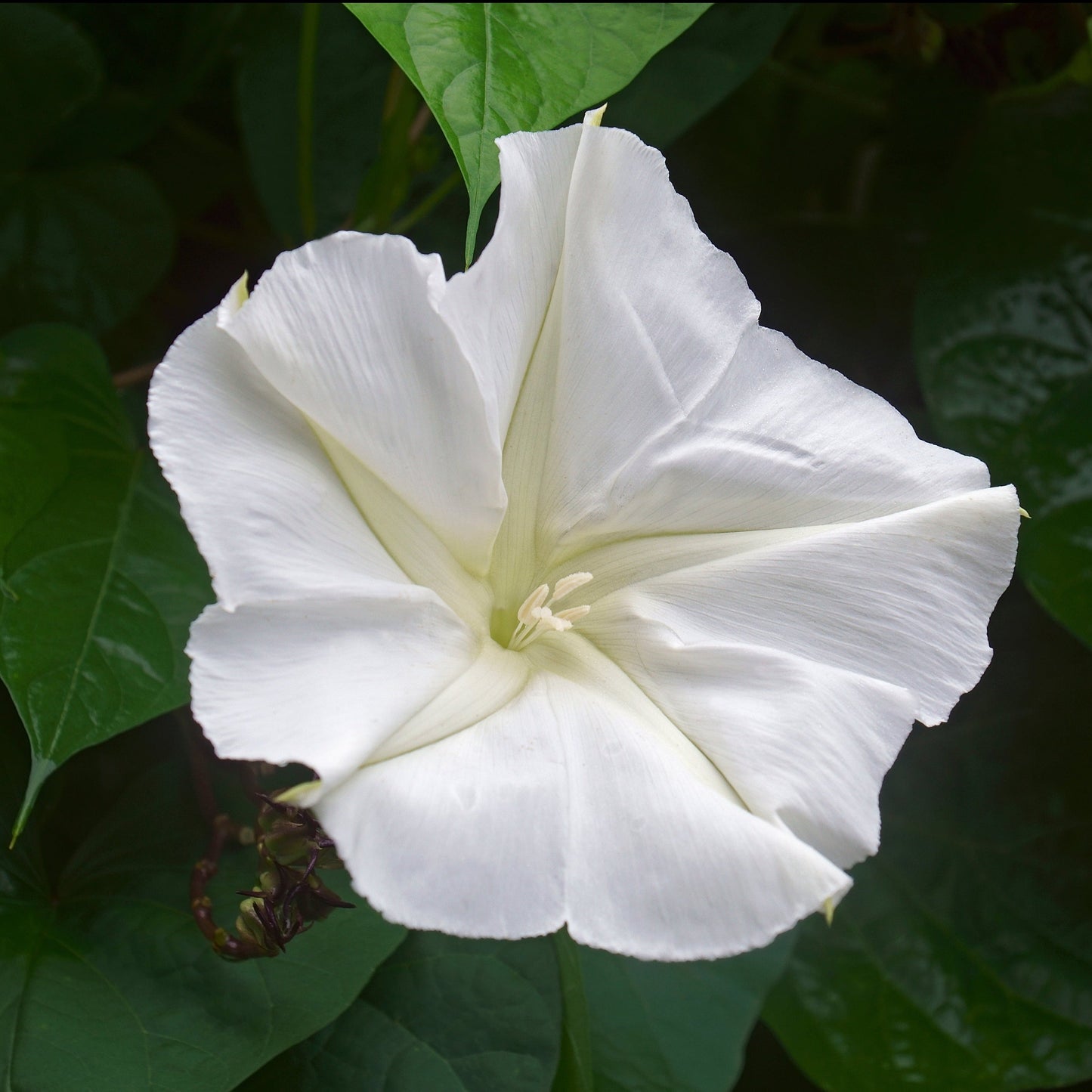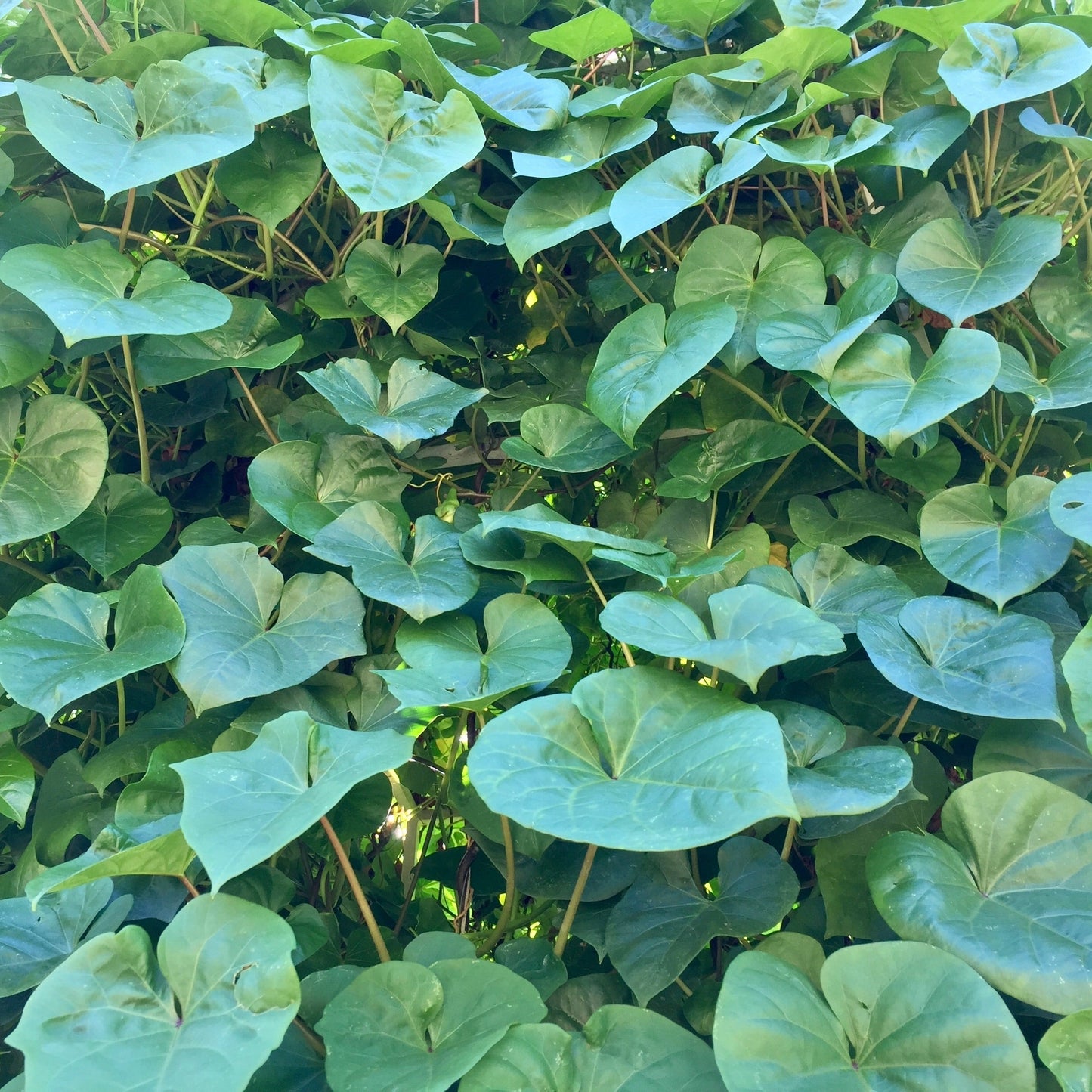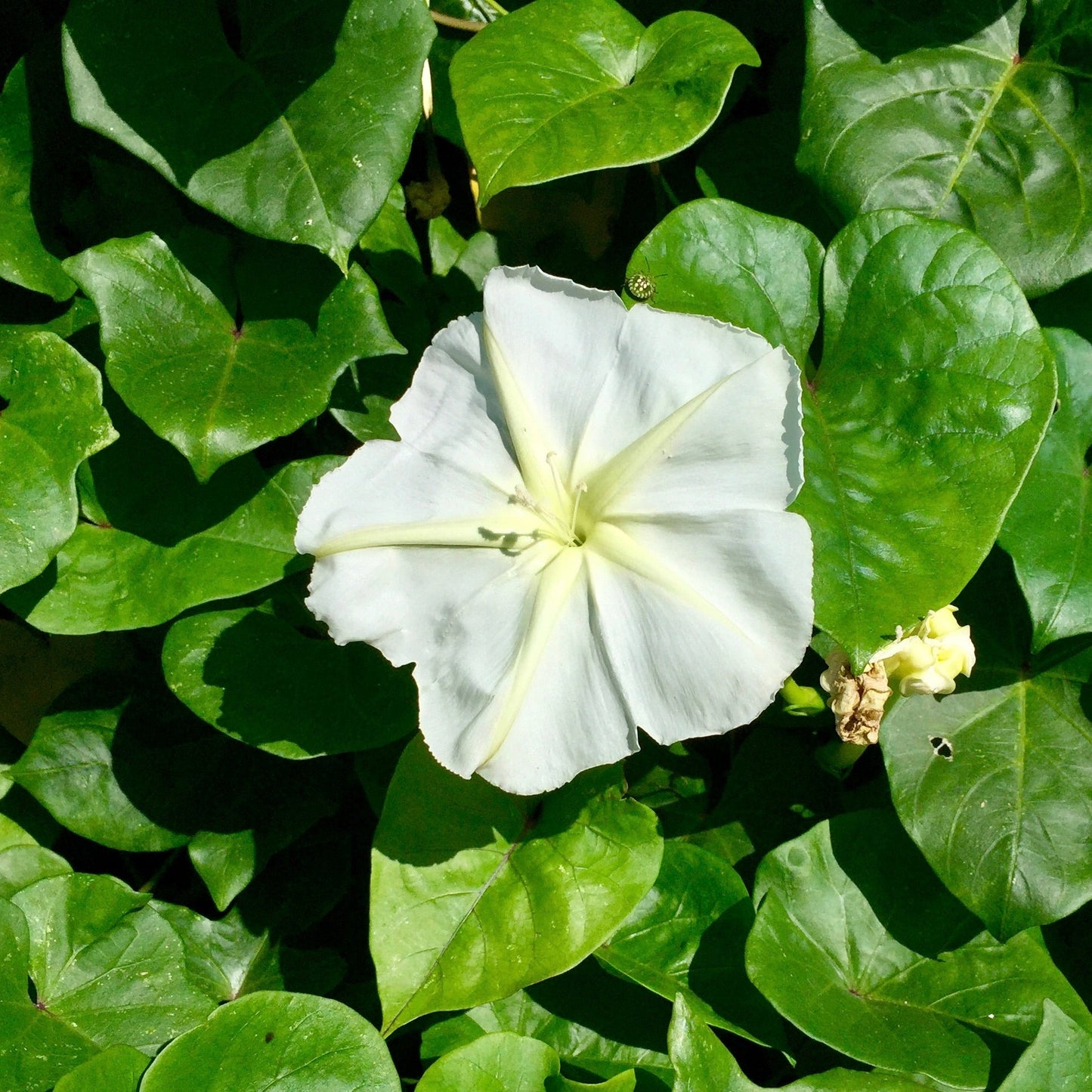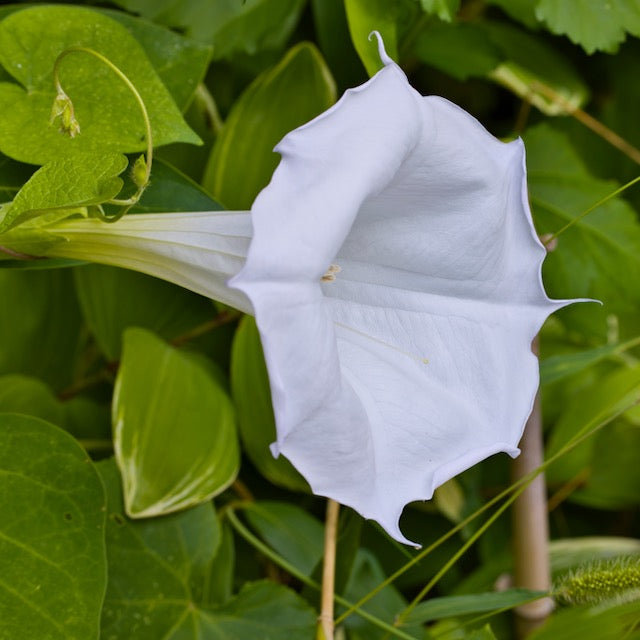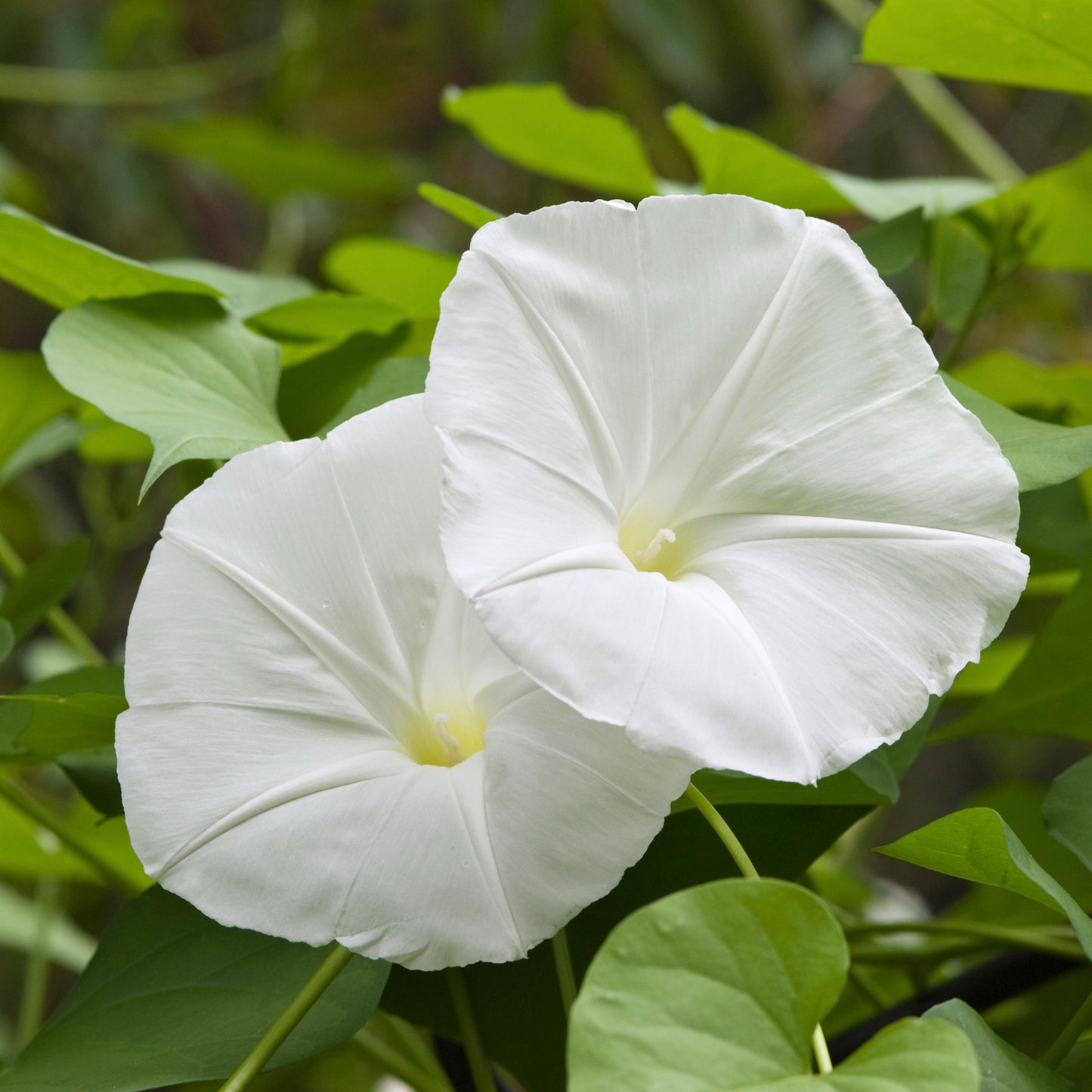Moonflower, Giant (Ipomoea alba)
List Price: $4.00
Couldn't load pickup availability
This tender vine has trumpet-like white blooms, similar to those of its relative morning glory, that open only during the night— hence, the name Moonflower. Their intoxicating fragrance attracts flocks of bats that rush in to pollinate the blossoms. Nocturnal insects such as Luna moths and Hawk moths will also be drawn to these glowing flowers. The flower itself, round and pale, seems to resemble the moon, and has an enchanting quality that will enhance any patio or porch once the sky darkens or clouds cast overhead. Be sure to trellis this vine to allow it to climb its way skyward. It may be wise to trim back this plant before it can set seed, as Ipomoea alba will prolifically propagate new vines in the following season.
Historically, ancient Mesopotamians used extracts of Moonflower alongside other natural components to create a rubber-like substance. Thought to originate in Central America and tropical or subtropical regions of North America, Ipomoea alba can be found climbing on Panamanian rubber trees. It is thought that as early as 1600 BC the Olmec people used the latex of this plant in vulcanization of rubber to produce rubber balls. With its celestial sweetness, this plant will be sure to add an air of the ethereal to your home.
